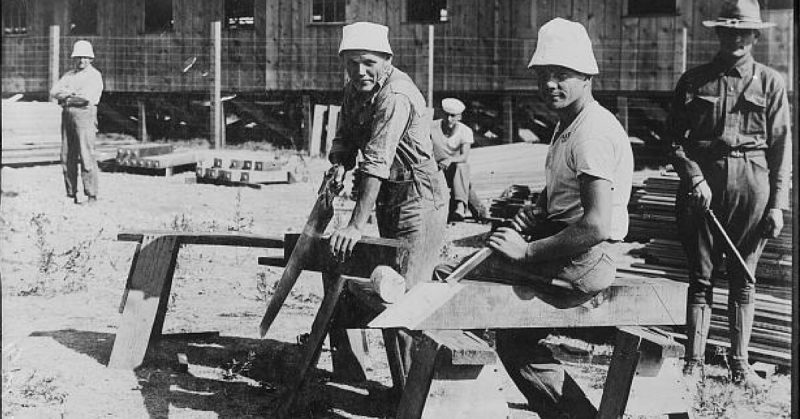Pictures from World War I are circulating on the Internet. They show the hardships faced by many subjected to internment camps, tar and feathering, and even lynching. The twist is that the photos are of the indignities foisted on German immigrants in America.
While Europe descended into the hell of war, German immigrants in America had their own nightmare scenario to face. Once welcomed to America to the extent that German had become the second-most spoken language in the US, fear and paranoia had turned public sentiment against German-Americans in the country. Even President Woodrow Wilson announced that German-Americans were ‘alien-enemies’ and that they must renounce their German heritage if they wanted to remain a part of American society. He went on to say that every German-American carried “a dagger that he is ready to plunge into the vitals of this Republic when he gets ready.”
German churches, schools, clubs and newspapers were assumed to be agents of the German government involved in a conspiracy against the US government. Thousands were fired from their jobs. Fourteen states banned the German language from being taught in schools. The American Defense Society provoked public burnings of German books and encouraged communities to change German names of streets, cities, parks and schools to the names of Belgian and French towns destroyed in the war. Some Germans even saw their property seized by authorities – in total, the US confiscated half a billion dollars in private property during WWI. In 1915, 25% of all high school students in the US studied German. It was the most studied modern foreign language in the country. By the end of the war, only 1% of high schools in America still taught the language. Paul Finkelman, a legal historian, says that the prevailing belief was that language somehow influenced your soul. If you spoke German, then you would think like a German and your loyalties would switch to Germany.
People even began changing the names of other things. Sauerkraut became “liberty cabbage.” Hamburger was “liberty steak.” Dachshunds were “liberty dogs.” German measles were referred to as “liberty measles.”
Employers with Germans on the payroll would receive anonymous calls from people wondering why they still had a German spy working for them.
The American Protective League began investigating anyone with a Germanic surname.
People reading German-language newspapers in public were spat on and insulted. John Meints was tarred and feathered by a mob in Minnesota because he hadn’t bought war bonds.
Robert Prager was lynched by people in Collinsville, Illinois (now a suburb of St. Louis) who were certain that he was a spy. Possibly more damning for him, he was a socialist that worked at a local coal mine and had upset the local miners’ union. One night he angered a drunken mob. They stripped him, put a noose around his neck and paraded him through town while making him sing patriotic songs. The mob broke beer bottles in front of him, forcing him to walk on the broken glass and cutting his feet badly. They forced him to kiss the flag and proclaim his love of the USA. Then they hung him from a tree and lowered him three times: once for the red, once for the white and once for the blue. Eleven men went to trial for the murder of Prager. All were acquitted.
6,000 German-Americans were sent to internment camps. The government banned German-Americans from living near military bases, airports, ports and the capitol. Every German-American was required to have their fingerprints taken and registered.
Some of the interned Germans were not released until 1920 even though the fighting stopped in 1918.
